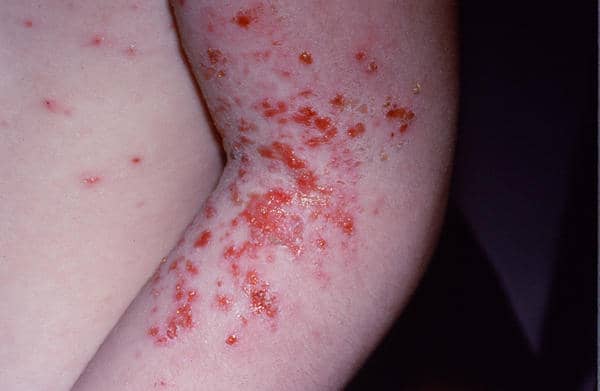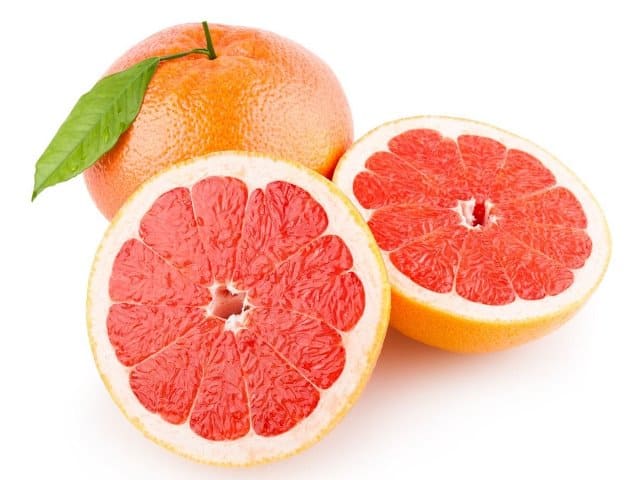Indian fire rash(impetigo) looks like red ulcers that may differ in severity. The most affected areas are the nose and around the mouth. The main cause of Indian fire rash is the bacteria that enter the body through scratches, wounds, and any other form of imposed skin.
Have you ever wondered what those horrible looking red sores are that sometimes appear on the nose or near the mouth?
The ones that make you want to scratch your face right off. Have you ever been worried if those blisters are contagious? Here, we answer all your questions. But first, let’s know what a rash is.
A Rash is simply a manifestation of skin that can be caused due to unhygienic local conditions.But, these are mostly harmless and in very rare cases have resulted in any severe complications. There are many kinds of rashes.
Some are contagious while some are not. One of the most common kinds is the Indian fire rash.Indian fire rash, also known as Impetigo is a contagious skin. It can affect you, your children and even your dogs.
It is transmittable so if you see anyone with an Indian fire rash, avoid direct contact.
Table of Contents
Types of Indian Fire Rash(Impetigo)
Now, before starting to discuss the treatment for the rash, let’s first understand the different forms of Indian fire rash.
1. Contagious Impetigo
Also known as Non-bullous Impetigo, it is the most common form of Impetigo. The rash starts with a little sore near the nose or mouth, which then breaks and forms a honey-colored scab due to leaking pus or fluid.
These are not painful but can be itchy. Don’t scratch otherwise it will spread the infection.
2. Bullous Impetigo
It is mainly seen in children below the age of 2 years. The rash includes fluid-filled blisters all over the body, mainly arms, trunk, and legs, surrounded by red and itchy skin. The breaking of Blisters results in the formation of yellow scabs.
3. Ecthyma
The painful fluid or pus-filled sores become ulcers that reach deeper into the dermis. After they break, they get hardened and form gray-yellow scabs, which leave scars. Sometimes, swollen lymph nodes might be seen in the affected areas.
Symptoms of Indian Fire Rash(Impetigo)

Usually, these skin infections are not severe and do not cause any complications. But in some rare cases, complications do occur. Anyone who sees these worsening symptoms in the affected person should consult a doctor immediately.
i. Cellulitis
If the infection reaches a deeper layer of the skin, it can cause Cellulitis. It results in red, inflamed skin that causes fever and pain.
ii. Guttate Psoriasis
It is a type of Psoriasis that leads to red, inflamed, scaly patches of skin all over the body. It may occur in children and teenagers.
iii. Scarlet Fever
It is a rare bacterial infection caused by the causative bacteria Streptococcus pyogenes. It is characterized by the occurrence of pink ashes all over the body. Other symptoms include vomiting, nausea, and pain.
iv. Sepsis Or Bacteremia
It is a bacterial blood infection. It is a life-threatening infection, and the affected person must be hospitalized immediately. The symptoms include fever, rapid breathing, dizziness, confusion, and vomiting.
v. Post-Streptococcal Glomerulonephritis
This Impetigo complication is very rare. It is caused by the infection in the small blood vessels of the kidney which is extremely fatal.
The symptoms include dark-colored urine and hypertension. Infected person must be hospitalized immediately so that their blood pressure can be monitored.
Causes Of Indian Fire Rash(Impetigo)
Knowing the cause of a disease might help fight as well as prevent ourselves from the disease.
So, let me tell you the causes of this disease:
i. Bacteria
Staphylococcus aureus and Streptococcus pyogenes are the main reasons behind the Indian fire rash. They are the causative bacteria.
ii. Dermatitis
Skin conditions like Dermatitis can lead to this skin infection in adults. Insect bite, scratch or a cut on the skin can result in this infection among children. However, it is seen that children with no major skin injury can also be affected by Indian fire rash.
iii. Allergies
If you have any allergies that cause skin inflammation, keep in check for the Impetigo rash.
iv. Transmission
Anyone who comes in contact with the infection causing bacteria or comes near the infected area of the affected person will be soon seeing some red blisters on his/her face.
Infection can also be caused by indirect transfer such as coming in contact with the clothes, toys, bed sheets, towels, etc. of the affected person.
v. Staph
The Staph bacterium spreads the Indian fire rash to the surrounding skin of the infected area. The protein that holds the skin cells together is attacked by the toxin of the staph bacteria. The damage to the protein results in the spreading of the causative bacteria.
vi. Immunity
Though Indian fire rash can infect anyone belonging to any age group, mostly children belonging to age 2 to 8 years are affected by the bacteria. The main reason behind this is that children have the underdeveloped immune system that makes them more vulnerable.
vii. Injury
If you get a scratch, the bacterium that resides outside the skin finds its way into the body which causes the Indian fire rash.
It must be noted that the Staph and Strep bacteria grow in conditions like a group of people standing close in a public place.
Home Remedies To Get Rid Of Indian Fire Rash(Impetigo)
The Indian fire rash (Impetigo)usually gets healed by the body itself within 3 to 4 weeks, but if you want to speed up the process, the following points might help:
1. White Vinegar

- You can make your antibiotic solution using white vinegar and warm water.
- Add 1 tbsp of vinegar in 2 cups of water and voila you have your very own antibiotic solution.
- Clean the infected area with this solution. Pat the skin dry and cover the area with gauze.
2. Heat Therapy
- Heat will help kill the causative bacteria. Just soak a washcloth in warm water and wring the excess water.
- Apply the washcloth to the infected skin for few minutes. Repeat this at regular intervals.
3. Tea Tree Oil

- Mix 1 tbsp of olive oil with few drops of tea tree oil and apply over the affected area.
- Let the mixture sit for 20 to 30 minutes and then rinse gently with warm water. Repeat this 2 to 3 times daily.
4. Grapefruit Seed Extract

- Add few drops of the grapefruit seed extract to 2 tbsp of water.
- Apply to the affected area 2 to 3 times daily. There might be some itching at the start but it will help heal the rash sooner.
5. Garlic

- Garlic is a great infection fighter as it has natural antibiotic properties. Fry 2 to 3 minced garlic cloves in 2 tbsp of sesame oil.
- Cool the oil and separate the cloves from the oil. Apply it once or twice for a few days. In fact, add cloves to the diet. This is the best remedy to get rid of impetigo fast on the face.
The antibiotics and the antiseptic creams might depend on your previous skin conditions. So, consult your dermatologist before applying any one of them.
Prevention Measures For Indian Fire Rash (Impetigo)
We all know prevention is better than cure. It is an old but the most effective saying. It is good for your health as well as your pocket (Well, not my pocket).
Good hygiene is the most effective way of reducing the risk of development or the spreading of causative bacteria. If you get a cut, graze or a scrap wash it immediately.
The following measures will help prevent the transfer of infection to others and also to the unaffected parts of the affected person.
- Use a neutral soap and running water to wash the affected area.
- Use Gauze to cover the infected area.
- Do not touch the sores.
- The patient’s clothes, towels, and bedding must be daily washed.
- Patient’s belongings must be shared by other people.
- Wear gloves and wash hands thoroughly after applying the antibiotic ointment.
- Cut Patients’ nails to avoid scratching.
- Isolate the patient until the treatment is finished.
So, if you or any of your family member or friend suffers from this infectious disease, try the home remedies. If the symptoms get worse consult your doctor immediately.





